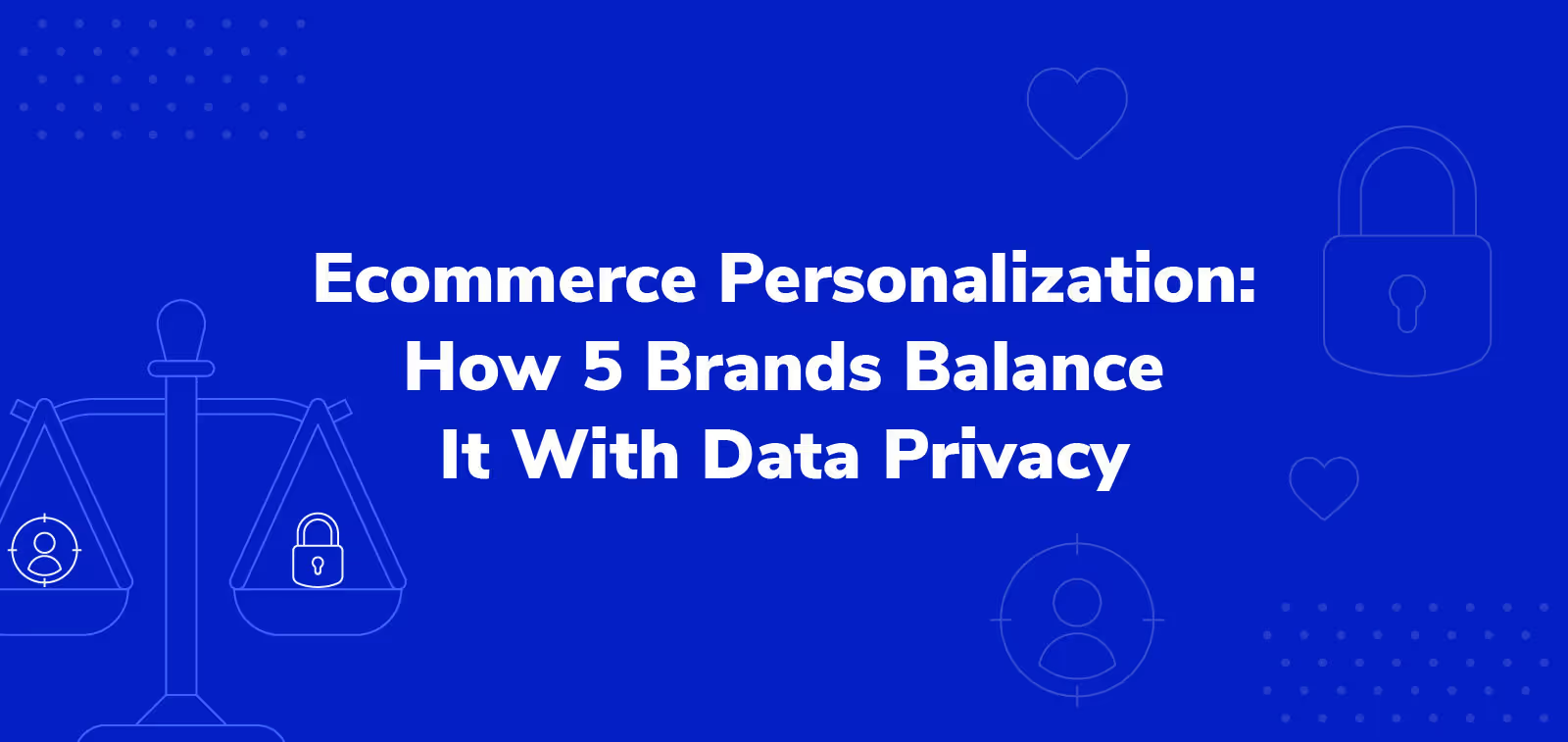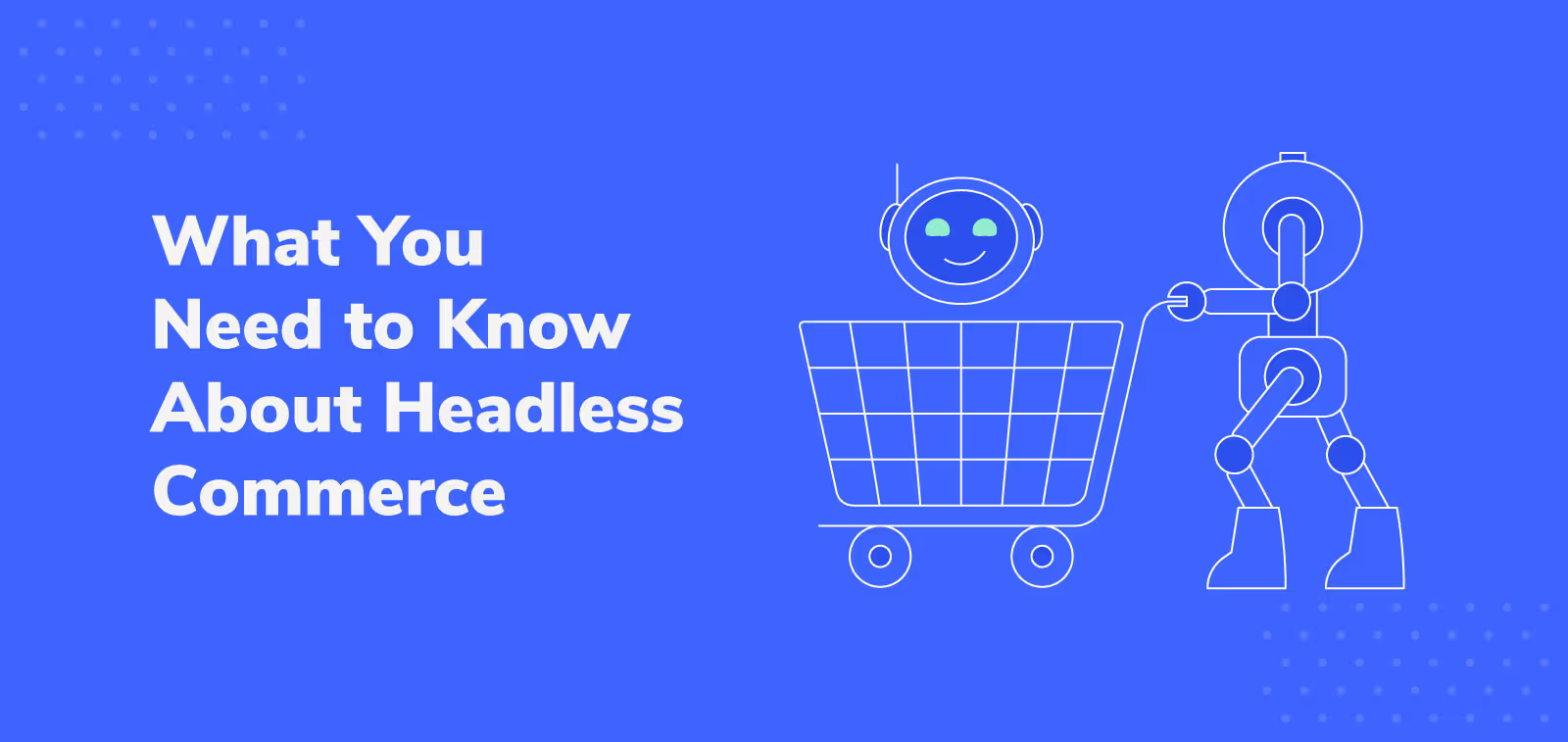The Complete Guide to Value-Added Services

Ecommerce brands know how important it is to invest in the purchase funnel and conversion optimization, but the post-purchase experience too often gets left behind.
Today’s environment is too competitive to forget about your customers after the sale. Long-term customer relationships aren’t made, they’re nurtured — and solving customer problems downstream builds affinity and loyalty.
One way to do that is through value-added services like:
- Live chat
- Personalized recommendations
- Loyalty programs
- Product protection
- Frictionless returns
- Special offers
- Deferred payments
- Shipping insurance
- Customer reviews
Let’s look at each of these value-added services and see how they’re being used today.
What are Value-Added Services?
The term “value-added service” refers to a feature or service that adds above-and-beyond value to the shopping experience.
The top merchants are dominating the market by continuing to innovate on the experience they provide. Two-day shipping was almost unheard of before Amazon Prime. Today more than 90% of consumers see two- to three-day delivery as a baseline.
But Amazon is just one of the many top enterprise retailers leveraging value-added services to drive return purchasers — and two-day shipping was just one of the first value-added services that, once novel, is table stakes today.
Let’s look closer at each value-added service and its unique benefits.
Live chat
In-store retail environments lended themselves well to personal, human customer service — but online, it’s a little more challenging. Live chat can add a human touch onto your ecommerce site.
Plus, customers chatting with your company are highly engaged.
On average they’re up to 2.8x more likely to buy, and they spend 10–15% more than other customers, so it’s in your best interest to be there for them.
Main benefits of live chat:
- Higher conversion rates
- Increased revenue
Try live chat if you have a large portfolio of products that is difficult for customers to navigate, or if your support agents field frequent questions that are too complex for chatbot logic or FAQs. Another great use case for live chat is if you serve customer needs that could be time-sensitive.
Example: Rent the Runway
Rent the Runway was built on dressing women for special occasions. A last-minute wardrobe malfunction before a once-in-a-lifetime event can make or break a customer’s brand affinity. Live chat enables customers to get real-time assistance from live RTR agents, and in return, customers know they’ll be taken care of for their most special events.

Loyalty programs
Loyalty programs reward customers for repeat purchases, with the goal of keeping them in your ecosystem and connected to your brand. They have a wide range of implementations, from simple to complex, and from free to fee-based. But they’re not just your business doing your customers a favor.
Loyalty programs provide a treasure trove of first-party data about your most loyal customers. Nearly three in four consumers say they’re willing to give up some of their data for better pricing, discounts, or offers.
The key to a loyalty program that drives customer satisfaction while creating value for your business is finding the right balance between give and take. Customers give their data for what they’ll get in return — the bigger the ask, the bigger the reward should be.
Main benefits of loyalty programs:
- Increase revenue
- Drive repeat purchases
Example: Amazon Prime
On the more complex end of the loyalty program spectrum is Amazon Prime, which costs an annual fee to join but unlocks numerous benefits — from free two-day shipping to an entire video and music streaming service.

Personalization
Shoppers want to feel as though the shopping experience is tailored to their needs.
One popular, relatively simple way to add personalization to your shopping experience is to use customer purchase data to recommend complementary or similar products.
Data shows that customers who click on product recommendations are 5.5% more likely to convert, so this relatively simple element of personalization could really pay off.
Main benefits of personalization:
- Improve conversion rates
- Increase revenue
- Drive repeat purchases
If you are in ecommerce, you should be working toward some level of personalization, if you have not already. As merchants become more sophisticated at gaining and leveraging their first-party customer data, personalization is more likely to become table stakes.
Example: Sephora
Sephora is one of the gold standards in ecommerce personalization. As Sailthru points out, “The Sephora app, email marketing program and website deliver their own expertly personalized experiences. They’re also integrated with each other (and the in-store experience), creating a fully consistent experience, the main driver of customer satisfaction.”

Customer reviews
To grasp the importance of customer reviews (among other things), one only has to recall the string of stories in 2016 about Amazon shoppers who mistakenly purchased furniture sized for dollhouses instead of full-sized pieces.
92% of customers factor reviews and testimonials into their purchasing decision.
Surfacing customer reviews on your ecommerce site can help a customer feel more confident about making purchases.
Main benefits of customer reviews:
- Increase conversion rates
Customer reviews are essential for almost any business, but pay particular attention if you’re still building brand trust, or if you’re selling beauty products, apparel, or other goods that may look, feel, or fit differently than expected.
Example: NewAir

Frictionless returns
It’s already frustrating to receive an incorrect product or a product that fails to meet expectations. Many of the same kinds of issues that necessitate customer reviews make frictionless returns important. Apparel might not fit as expected, colors may look different in real life, etc. And that frustration will compound if the returns process isn’t customer-friendly.
A frictionless returns process can increase customer loyalty, as 76% of first-time consumers who had a simple returns experience say they’d shop with that merchant again.
Main benefits of frictionless returns:
- Drive repeat purchases
- Increase customer satisfaction
Returns become particularly important in things like apparel and furniture, when the way things fit really can’t be fully ascertained until the customer sees it in real life. And for mattresses, which we’ll see below — without the ability to return them without hassle, they would have a more difficult time getting people to buy sight unseen.
Example: WinkBed

Deferred payments
Today’s uncertain economic environment, as well as a large group of younger buyers eschewing credit cards, means that cash is king. That’s one reason that offering your shoppers the option to finance at the point of sale — online and in-store — with a buy now, pay later solution can lead to more purchases.
In 2020 and 2021 the user base for BNPL services increased by 85% — and that was in just 15 months.
There is a clear consumer demand for this service.
Main benefits of buy now, pay later:
- Improve conversion rates
- Increase revenue
Allowing people to pay over time gives them flexibility to keep cash on hand and better manage their credit. Try deferred payments if you sell big-ticket items like furniture or luxury goods.
Example: Modloft
Modloft works with Affirm to give more customers access without the high interest rates that come with credit cards.

Shipping protection
More ecommerce deliveries in 2020 led to a rise in package theft: 43% of respondents reported a package theft, up from 36% in 2019. And that’s just one thing that can go wrong with deliveries — particularly with today’s uncertain supply chain. Shipping protection is a value-added service that can help make sure your customers receive their products.
Benefits:
- Customer satisfaction
- Drive repeat purchases
Try shipping protection for particularly valuable products or things with high theft rates — and for items that are collectible or one-of-a-kind, shipping protection is table stakes.
Product protection
A modern product protection plan can turn a frustrating experience into a positive one. According to Assurant, merchants who offer product protection see purchase intent increase by an average of 25%. But historically, the claims process has been particularly arduous for the customer, leaving them disappointed with their experience.
Based on internal Extend data, customers who buy protection plans have a 4.5% repeat purchase rate and account for, on average, a 2% increase in incremental revenue.
But one of the biggest benefits is the one only product protection provides — it keeps customers using your products.
Main benefits of product protection:
- Improve conversion rates
- Increase revenue
- Increase customer satisfaction
- Drive repeat purchases
- Keep customers using your products
Full-stack product protection is a great service for both retailers and manufacturers who want to give their customers peace of mind, drive pure profit, and create long term advocates by keeping customers in their ecosystem.
Example: Felix Gray
Bobby Shomrony, VP of Sales Ops and Strategy for Felix Gray, knows how important it is to respond to customer expectations. That's why, as he began to notice that customers weren’t just asking if their products were covered by a manufacturer’s warranty, but if Felix Gray offered extended product protection, he knew it was time to act.
“After we launched on Shopify, our first add-on app and partnership was with Extend — that’s how much we prioritized the initiative and believed in the potential of adding product protection for our customers and the benefits that come along with it,” Bobby said.
How to get started with value-added services
In every brand’s never-ending quest to increase revenue and drive customer loyalty, they’re bound to experiment with different services and technologies that aim to bring in more customers. But the problem is that many customer acquisition strategies overlook one crucial phase of the customer journey: servicing.
Without special attention on keeping existing customers happy, merchants run the risk of losing them all together. Think about it:
- How many customers never buy from you again because they don’t know you offer a new product that meets their needs?
- How many customers had an issue with your product, but they never let you know?
- How many switch to your competitor, and you spend countless dollars on retargeting ads?
This is where value-added services come into play.
Value-added services keep customers in your ecosystem and using your products. These are things like free shipping, personalized product recommendations, and product protection.
There are many services you can implement to help drive ecommerce growth, and as such, it can be hard to know where to start.
Find the right value-added services for your business and customers
There are dozens of value-added services available to help your business reach its goals and improve the customer experience, and it might be hard to know where to start.
To begin your selection process, you must first answer three questions:
- What business goals am I trying to drive?
- How will my margin be impacted?
- What do I hear from my customers?
What business goals am I trying to drive?
Whenever you seek a new solution to enhance your customer experience, it’s important to always ground your process in what you’re trying to achieve.
Factor in time to look at your company’s performance and identify areas for improvement. For example, are you driving a lot of traffic to your website, but customers aren’t buying? You may want to focus on a value-added service that improves conversion rates.
But don’t stop at purchase — an effective strategy for adding value and improving the customer experience considers the entire post-purchase lifecycle:
- How many purchases come from existing customers? (repeat purchase)
- Are your CSAT scores hurting your brand? (customer satisfaction)
- Are known product issues limiting organic brand advocacy? (product use)

Each value-added service drives different business goals — so assess what you need first.
How will my margin be impacted?
The next factor to consider is how your profitability might be impacted by the value-added services you elect to add.
Each value-added service has different implications: some charge for access to their platform like Yotpo or Active Campaign. On the flip side, most will help you drive revenue, but some might also help eliminate costs — like Loop and Extend.

Analyze your cash flow and see which value-added service(s) would be best suited for you based on your business goals and objectives.
What do I hear from my customers?
The final — and perhaps most important — factor you must consider is how your customers will be impacted. You’re probably already listening to your customers to understand what they need. Offering value-added services can be a terrific way to demonstrate that you’re paying attention to what they’re saying in support calls, customer reviews, recommendations on social media, etc.
In particular, pay attention to what might create a negative experience for your customers.
To help identify the most urgent needs from your customers’ point of view, you could collect feedback from social media, review sites, customer support tickets, etc., and create a word cloud to better visualize the most urgent needs.
Sequencing value-added services for higher revenue and customer satisfaction
Once you’ve assessed your business goals, needs, and customer feedback, it’s important to also consider the macro dynamics in the market and how customer expectations are changing.
Consider product shipping. Free shipping was previously seen as a huge incentive to drive customer purchases. But now it’s an expectation, with 66% of consumers expecting free shipping on every purchase they make online.
As customer expectations continue to evolve, merchants must keep up by offering value-based services that improve the customer experience and improve loyalty.
1. Frictionless returns and deferred payments
The first two value-added services your ecommerce store needs are frictionless returns and deferred payments or buy now, pay later (BNPL).
An easy returns process for products that don’t meet customer expectations or get damaged during shipping is a powerful post-purchase opportunity for building customer loyalty. In fact, Narvar found that 96% of customers who are happy with a brand’s return process would buy from them again.
Similarly, 50% of surveyed consumers say it’s important to have flexibility in being able to spread out their payments with BNPL.
If you don’t yet have these two foundational value-added services, you may be running the risk of customers looking for an alternative merchant that does.
2. Product protection
A working product is the best way to box out competition. If there’s no need for a customer to look for a new product, then there’s no opportunity for a competitor to snag them away from you.
So when a customer accidentally damages your product, how do you keep them in your ecosystem and motivate another purchase?
Modern product protection builds brand advocacy, leading to repeat purchases and referrals. Our internal data shows that customers who purchase Extend’s plans from a merchant partner repeat at a rate 4.5% higher than customers who haven't purchased a plan from that merchant.
Additionally, product protection is a pure profit play. The incremental revenue you earn with it can be invested in other value-added services.
3. Shipping protection
Customers sometimes go to a lot of effort to find their perfect product online. Once they make their purchase, you must do as much as possible to make sure they get their items. This is where shipping protection comes in as a clutch value-added service.
About 10% of packages are damaged during shipping, putting a customer’s valuable items at risk. Similar to product protection, offer shipping protection to give customers peace of mind. They know that if a package is lost, damaged, or stolen during transit, they’re covered.
4. Loyalty programs
After you’ve set up the first few essential value-added services that drive conversions and initiate repeat purchases, it’s time to incentivize customer loyalty through a loyalty program.
Loyalty programs allow you to create a system that tracks customers preferences, likes, dislikes, and needs. And they’re highly valuable: 80% of surveyed respondents say loyalty programs motivate them to stay with a brand. Moreover, 73% of respondents are willing to recommend brands with good loyalty programs.
5. Personalized recommendations
People want a personalized, hassle-free experience when they shop. They want smart recommendations rooted in behavioral data, and they’re willing to give up a bit of their privacy for a more personalized shopping experience. McKinsey reports that 76% of consumers get frustrated when a brand doesn’t deliver a personalized customer experience.
In a world with infinite options, you must help customers cut through the chaos, meet them where they are, and show them you know and understand them by adding personalization.
6. Live chat
Adding live chat to your website can help with personalization. Plus, it gives customers an easy way to reach out to your brand when they have questions or feedback.
With that said, the reason live chat shouldn’t be higher in this list of value-added services is because you’ll need bandwidth and resources to man your chat. For more information on implementing live chat and recommended providers, check out this article from Zendesk.
7. Customer reviews
Word of mouth marketing via customer reviews is one of the most important value-adds you can incorporate into your improved customer experience. However, doing customer reviews the right way requires some effort, including deciding where to place them on your site and how to handle negative reviews.
You’ll also want to make sure you enable customer photos, verified purchases, filtering options, etc.
8. Special offers
Special offers can be powerful drivers for customer acquisition. Think about BOGO (buy one get one) — it’s a simple approach that can lead to an increase in conversions. The truth is that special offers are similar to loyalty programs and personalized recommendations, and as such, they’re becoming more commonplace and expected.
However, you can take special offers to a unique, hyperlocal level by creating dynamic campaigns that are targeted to particular geographies or demographics. Fast food chains like Burger King and McDonald’s are great examples of this: they run geographic campaigns on a regular basis to help drive local sales.
Implementing Product Protection from Extend
If we can learn anything from ecommerce evolution — especially over the last few years — it’s that value-added services are becoming table stakes experiences. Customers will continue to make their purchasing decisions based on the maximum amount of value they can get from your brand. And as a result, more and more value-added services will emerge on the market.
To make sure you’re offering the highest amount of value with each customer interaction, compare your own approach to value-added services with the suggested sequence listed here.

Victoria Fryer leads the content marketing team at Extend. Previously, she managed content at Contacto and BigCommerce.
.svg)












































.avif)











